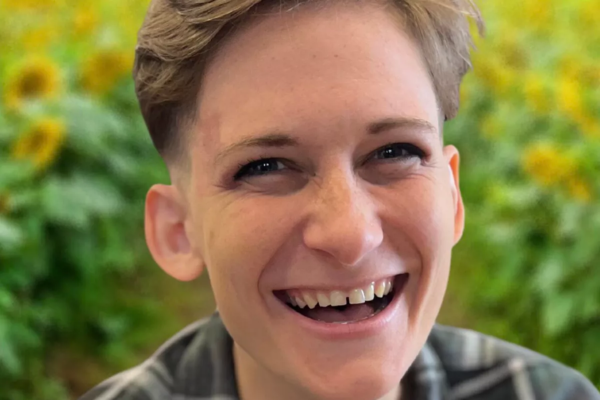When Chrissy Holm began writing her debut novel, the memoir Finding Sunlight: A Coming-of-Age Memoir About Love Within the Wreckage of Purity Culture due out this November, it was primarily to process how her parent’s divorce, when she was 16, shaped the rest of her formative years. Ultimately, Holm created something that was about much more than just divorce.
“I know a lot of people have been through that experience,” says Holm, a Minnesota-based writer, editor, podcast host, and project manager. “But I wanted to help create a space for others to know ‘this stuff is hard.'”
Indeed, from that focal point, the book became a reflection also on being raised in religious purity culture, the patriarchal family structure tied to that upbringing, and her non-heterosexuality—and how the interaction of all these things influenced her understanding of love and intimacy. Also embedded in that exploration are themes of forgiveness, mental health, and Midwest life.
Finding Sunlight isn’t a perfect literary feat. The many themes sometimes crowd it, such that you get a little bit of everything arguably at the expense of diving deep into any one topic. Additionally, frequent time-jumping may make it hard to follow the timeline and cast of characters.
However, Holm has an artful way with words. I especially love how she roots the book’s most analytical parts in an earthy framework, where sunflowers are linked to epiphanies and healing, and her pivotal romances are ascribed to one symbol each of water, ground, wind, and sun. Additionally, with her artfulness and a diary entry tone, Holm intimately takes readers into her mind to authentically live her journey for themselves.
It wasn’t easy for Holm to be so vulnerable, but she felt ready to share her story and wanted to help others feel less alone in their own, however relatable experiences. In fact, that’s part of the beauty of Finding Sunlight—the variety of topics means different people can relate to it.
Moreover, these topics do often intersect. For example, while the book’s focus isn’t Holm’s queerness, many queer people can relate to having their own self-acceptance journeys marred by restrictive religiosity.
There is one headscratcher part of the memoir’s queer throughline, though; Holm never refers to herself explicitly as bisexual (or any term), even in her pointed moment of self-acceptance. Holm admits she might have omitted a label partly from lingering fear of what it means to not be straight.
But even if that might frustrate some readers, on the other side, many queer people believe labels aren’t necessary; And, as Holm suggests—in the book and in talking to Tagg—queer identity is not beholden to any particular lived experience or verbiage. In fact, that’s one takeaway she hopes the book imparts—especially for youth, as political debates wage about the depth and independence of kids’ thought capacity and sexuality awareness.
“I want to help affirm that you might [really] know how you feel,” says Holm. “And it’s okay if that changes, too, as you get older. [With sexuality, religious beliefs, or anything], it’s okay to not have all the answers and still be on your journey. It’s not a one-way path.”
More broadly, Holm hopes that with this book, and any she writes in the future, she encourages others to share their own stories, and what’s in their heads.
If a book that began as one person’s meditation on one divorce can indeed do that, it would, for dark topics and amid dark times, certainly be a ray of sunlight found.


